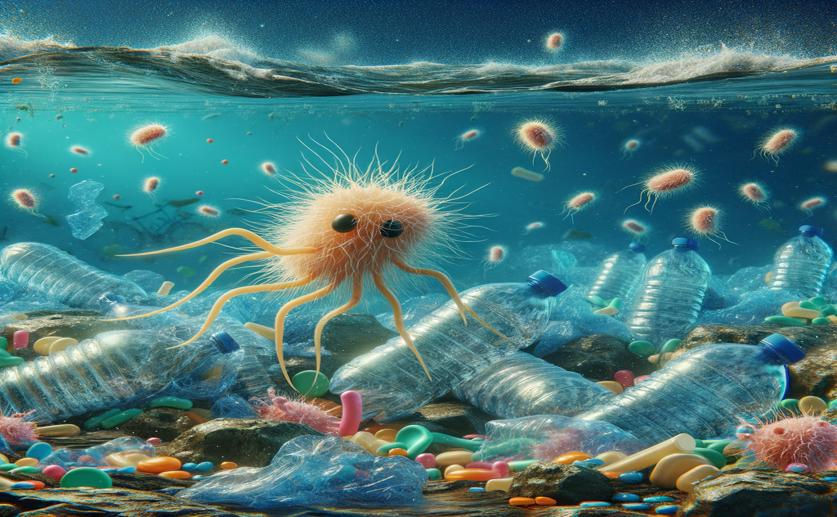
Plastic-Invading Microbes from Sewage to Sea
Jenn Hoskins
30th April, 2024

Image Source: Natural Science News, 2024
Key Findings
- The study at Bangor University explored how plastic waste may help spread antibiotic resistance in bacteria
- Microplastics in wastewater can carry bacteria and genes that make them resistant to antibiotics
- The research suggests that biofilms on plastics in water may boost the transfer of these resistance genes
References
Main Study
1) Microbial communities colonising plastics during transition from the wastewater treatment plant to marine waters
Published 29th April, 2024
https://doi.org/10.1186/s40793-024-00569-2
Related Studies
2) Updated research agenda for water, sanitation and antimicrobial resistance.
3) Monitoring antibiotic resistance genes in wastewater treatment: Current strategies and future challenges.
4) A review of the removal of microplastics in global wastewater treatment plants: Characteristics and mechanisms.
5) Microplastics in wastewater treatment plants: Detection, occurrence and removal.



 18th February, 2024 | David Palenski
18th February, 2024 | David Palenski